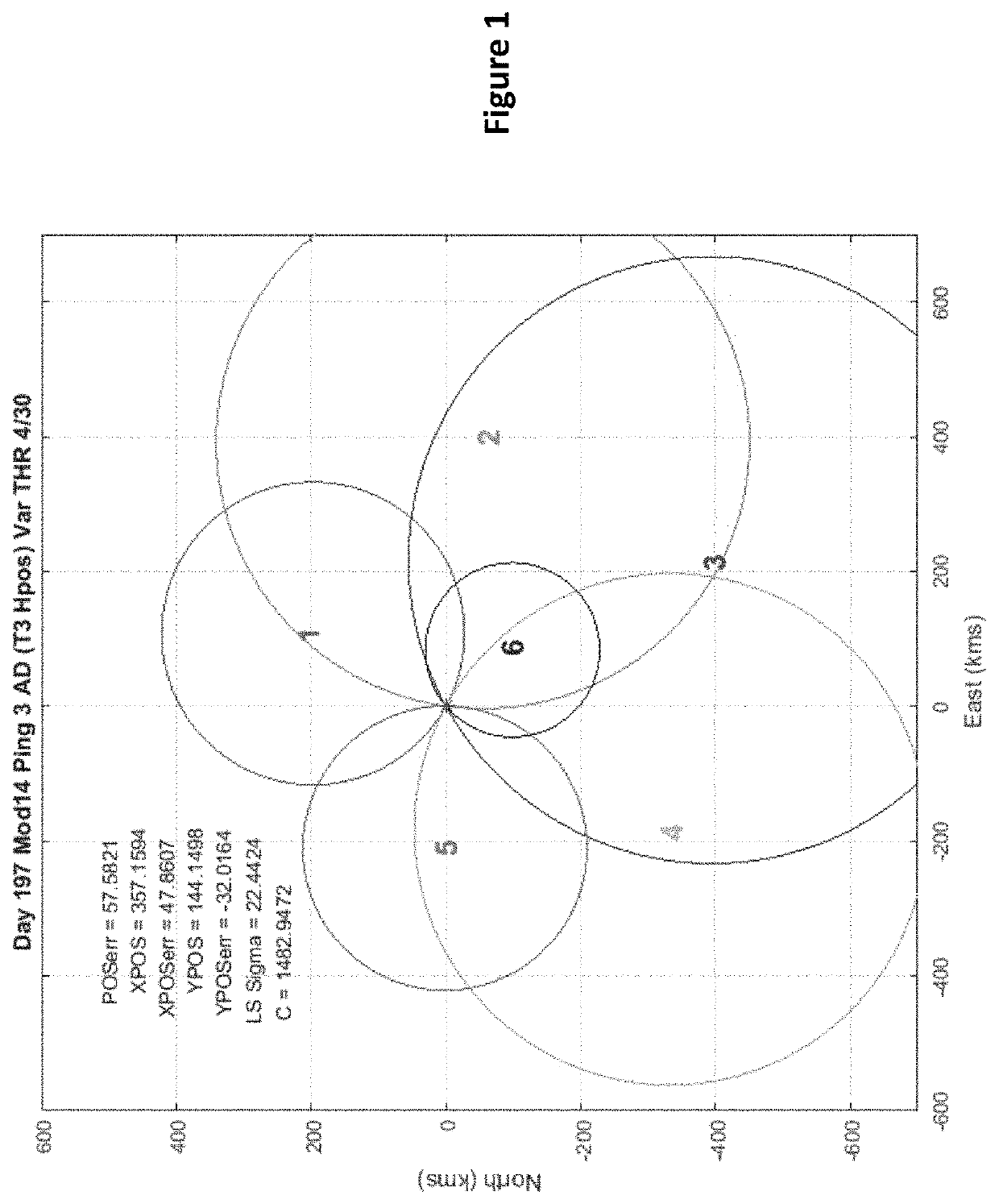Deep ocean long range underwater navigation algorithm (UNA) for determining the geographic position of underwater vehicles
a long-range underwater navigation and geographic position technology, applied in the direction of measurement devices, design optimisation/simulation, instruments, etc., can solve the problems of inability to accurately determine the geographic position of underwater vehicles, inability to effectively deny underwater gps, and inability to maintain or restore accurate performance,
- Summary
- Abstract
- Description
- Claims
- Application Information
AI Technical Summary
Benefits of technology
Problems solved by technology
Method used
Image
Examples
Embodiment Construction
[0003]The embodiments herein are generally directed to navigation of underwater vehicles and more particularly related to determining the geographic position of an underwater vehicle without requiring prior location information as a reference (i.e. surfacing for a GPS position, and without any information about the ocean sound speed in the area of operation).
Description of Related Art
[0004]Improving underwater navigation of undersea vehicles is an ever-evolving field of study and has become increasingly important with the development and expanded use of Autonomous Underwater Vehicles (AUVs), underwater buoyancy gliders, and subsurface scientific floats. Underwater vehicles are critical to defense, scientific ocean research, and deep-sea exploration, e.g., for mining, and oil and gas. Currently, navigation of underwater vehicles relies on GPS (see below) and is carried out over short ranges (approximately 10 km) at specific ocean areas of interest with bottom mounted and ship mounted...
PUM
 Login to View More
Login to View More Abstract
Description
Claims
Application Information
 Login to View More
Login to View More - R&D
- Intellectual Property
- Life Sciences
- Materials
- Tech Scout
- Unparalleled Data Quality
- Higher Quality Content
- 60% Fewer Hallucinations
Browse by: Latest US Patents, China's latest patents, Technical Efficacy Thesaurus, Application Domain, Technology Topic, Popular Technical Reports.
© 2025 PatSnap. All rights reserved.Legal|Privacy policy|Modern Slavery Act Transparency Statement|Sitemap|About US| Contact US: help@patsnap.com



